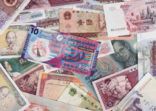“In China, we have seen rising defaults. [The concern is] if they spread further or intensify,” he told FSA.
China’s corporate debt risks are increasing as the economy slows. GDP rose 6.7% year-over-year in the first quarter, the slowest since 2009. The IMF in April said that loans at risk in China make up 15.5% of total bank loans, or $1.3trn. The country’s corporate bond defaults have significantly increased year-to-April, as the government started to normalise the pricing of bonds issued by state-owned enterprises.
“We do not expect a hard-landing scenario in China, but further deceleration in growth is likely. [Still], we believe the government has adequate resources to support the economy so we can avoid seeing further volatility [as happened] earlier this year. But we still think the bond valuation is quite tight,” he said.
Chinese credit continues to be more expensive than overall emerging-market credit, a differential that has remained at more than 100 basis points despite China being arguably the epicenter of market volatility in the early part of 2016, he said.
Look outside China
While there are pockets of value in Chinese US dollar bonds, he said the firm is cautious overall in its selections and argues that emerging market investors may find better value in other regions.
Mattila said he is “very selective” in the high yield sector in Asia, preferring short-dated exposure to names with reasonable liquidity profiles.
In investment grade credit, he would be prepared to increase duration to enhance returns given his firm’s benign rate outlook.
The firm views a small rate hike by the Fed in the second half of 2016 as likely, most probably by 25 basis points in September, but sees the pace and extent of further hikes as modest, with possibly one in early 2017 following the US elections and then one more during the year, taking the Fed funds rate to 1.25%, he said.
“We expect a relatively unexciting second half to the year after a rollercoaster start in January and February.”
















